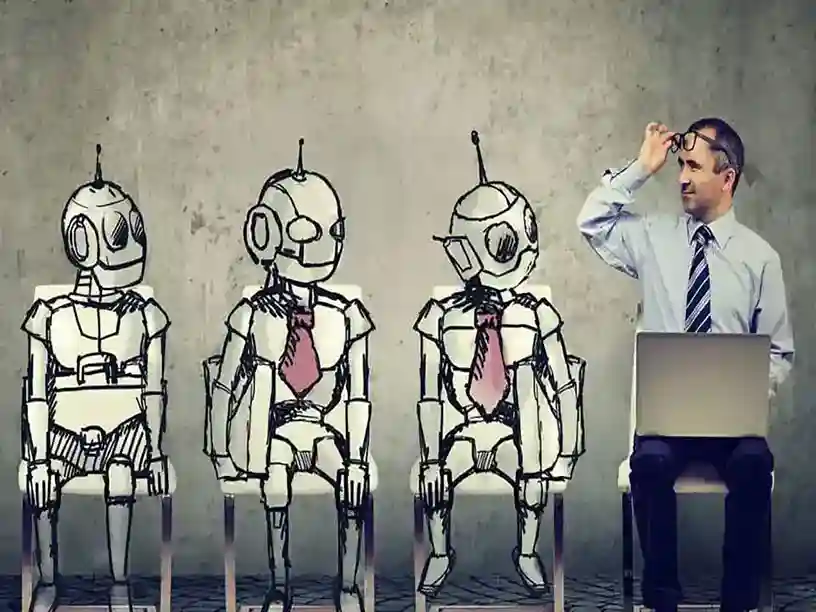Blogs / Artificial Intelligence and the Future of Work: Challenges and Opportunities
Artificial Intelligence and the Future of Work: Challenges and Opportunities

Introduction
Artificial Intelligence (AI) is increasingly transforming how we work and live. This technology has had profound impacts on workplaces, including task automation, shifting skill requirements, and the emergence of new job roles. In this article, we examine the challenges and opportunities AI brings to the labor market and suggest strategies to address these challenges and leverage the opportunities.
1. Impacts of AI on the Labor Market
AI acts as a powerful driver of labor market transformation by reshaping roles and industries in two main ways:
1.1. Task Automation
One of the most significant AI-driven changes is the automation of repetitive and routine tasks. AI technologies—such as robotics, machine learning, and natural language processing—allow organizations to perform many tasks automatically. While this can reduce costs and boost productivity, it may also lead to job displacement in roles where tasks are easily automated.
1.2. Emergence of New Jobs
On the other hand, AI opens up opportunities for new job creation. As AI adoption grows, there is rising demand for data specialists, algorithm analysts, and AI developers. These new roles require specialized skills and training, offering diverse employment opportunities.
2. Challenges of AI in the Labor Market
2.1. Job Displacement
A major challenge is the potential loss of jobs due to automation. Roles with tasks that are easily programmable may see significant reductions. This can lead to unemployment and greater economic inequality, especially in sectors heavily impacted by automation.
2.2. Need for New Skills
As AI technologies advance, the demand for new skills increases. Workers must learn data analysis, machine learning, and programming to remain competitive in modern workplaces. This need for continuous training and upskilling presents a significant challenge.
2.3. Organizational Structure Changes
AI can also alter organizational structures. Companies may need to adapt management and coordination methods to operate efficiently with new technologies. These changes can affect team collaboration, internal communication, and strategic decision-making.
3. Opportunities of AI in the Labor Market
3.1. Creation of New Job Opportunities
The rise of new technologies creates new job roles. Positions such as data analysts, machine learning engineers, and cybersecurity specialists are growing rapidly. These roles offer valuable opportunities, particularly for those with the requisite technical skills and education.
3.2. Increased Productivity and Innovation
AI enables organizations to enhance productivity and optimize processes. By leveraging AI, companies can analyze complex data, forecast trends, and develop innovative solutions. This drives competitiveness and provides strategic advantages.
3.3. Improved Worker Well-Being
Automating repetitive and strenuous tasks can improve workers’ quality of life. Employees can focus on more creative and challenging work, benefiting from new technologies.
4. Strategies to Address Challenges and Seize Opportunities
4.1. Investment in Education and Skill Development
To meet the challenge of evolving skill needs, investment in education and training is essential. Organizations and governments should offer programs for workers to reskill and stay current with technological changes.
4.2. Designing Supportive Policies
To mitigate negative impacts of job losses, supportive policies—such as compensation programs and worker transition assistance—are needed. These can include retraining initiatives, financial support, and career counseling.
4.3. Leveraging Technology for Process Improvement
Organizations should harness AI to optimize processes and boost efficiency. Process optimization, data analytics, and task automation can enhance performance and reduce costs.
Conclusion
As an advanced technology, AI has deep and broad impacts on the labor market, from task automation and new job creation to organizational restructuring. Simultaneously, AI offers opportunities to enhance productivity, innovation, and worker well-being. To navigate these changes, investing in education and skill development, crafting supportive policies, and embracing new technologies are crucial. By adapting and aligning with these trends, we can look forward to a brighter and more successful future of work.
✨
With DeepFa, AI is in your hands!!
🚀Welcome to DeepFa, where innovation and AI come together to transform the world of creativity and productivity!
- 🔥 Advanced language models: Leverage powerful models like Dalle, Stable Diffusion, Gemini 2.5 Pro, Claude 4.5, GPT-5, and more to create incredible content that captivates everyone.
- 🔥 Text-to-speech and vice versa: With our advanced technologies, easily convert your texts to speech or generate accurate and professional texts from speech.
- 🔥 Content creation and editing: Use our tools to create stunning texts, images, and videos, and craft content that stays memorable.
- 🔥 Data analysis and enterprise solutions: With our API platform, easily analyze complex data and implement key optimizations for your business.
✨ Enter a new world of possibilities with DeepFa! To explore our advanced services and tools, visit our website and take a step forward:
Explore Our ServicesDeepFa is with you to unleash your creativity to the fullest and elevate productivity to a new level using advanced AI tools. Now is the time to build the future together!